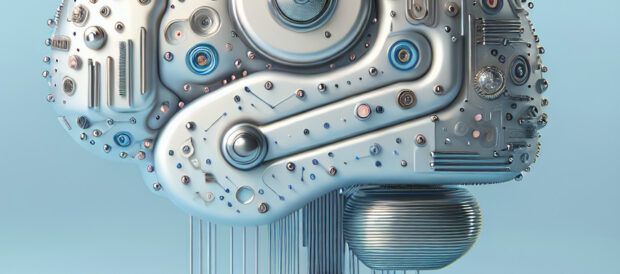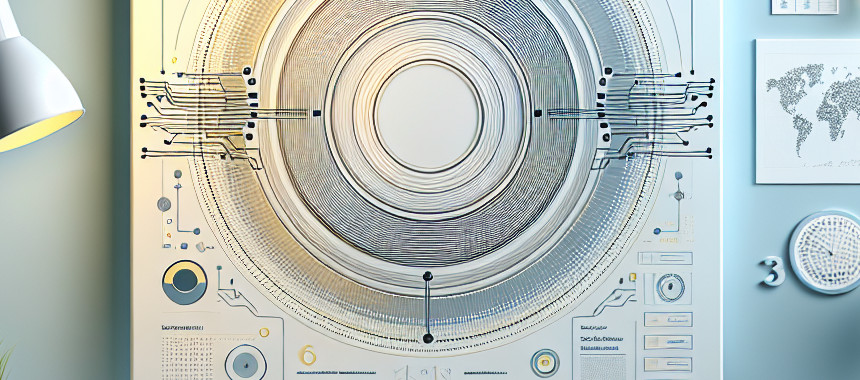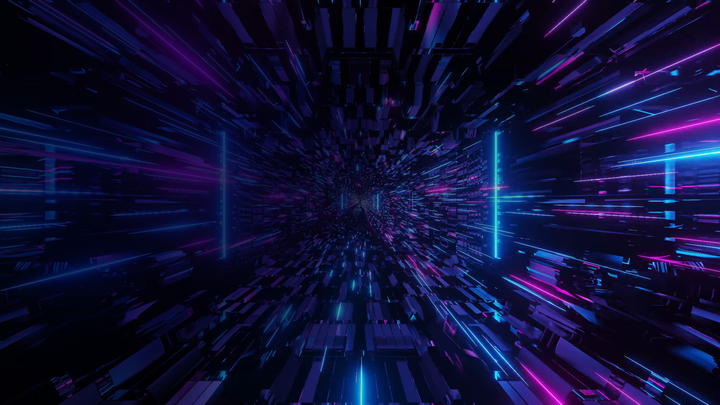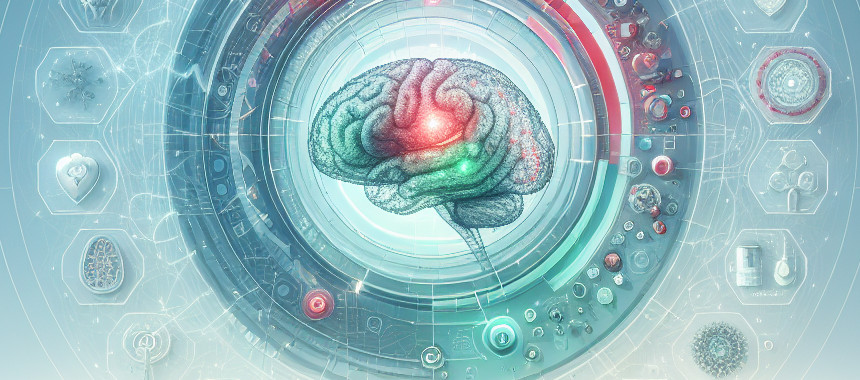
Neurotechnology Report
: Analysis on the Market, Trends, and TechnologiesThe neurotechnology sector is entering a capital-rich growth phase with measurable scale: the internal trend data records total funding to date at $12.28B and 705 active companies, signalling extensive investor interest and a broad innovation base. This report synthesizes patent, market and company signals to identify the highest‑value activities (closed‑loop neuromodulation, BCIs, diagnostics, regenerative neuroprosthetics), the enabling technologies (EEG, implantable stimulators, AI/ML), and where market demand, clinical need, and patent momentum intersect to create near‑term business opportunities.
We last updated this report 81 days ago. Tell us if you find something’s not quite right!
Topic Dominance Index of Neurotechnology
To gauge the impact of Neurotechnology, the Topic Dominance Index integrates time series data from three key sources: published articles, number of newly founded startups in the sector, and global search popularity.
Key Activities and Applications
- Neuromodulation therapies for chronic neurological and psychiatric conditions — development spans noninvasive TMS/tES to implanted DBS and responsive systems targeting depression, Parkinson’s and pain; patented closed‑loop control is a major focus.
- Brain‑computer interfaces (BCIs) for functional restoration — high‑bandwidth invasive implants and noninvasive EEG systems aim to restore communication and device control for paralysis and ALS patients (Neuralink).
- Neurodiagnostics and continuous monitoring — wearable EEG and AI analytics for early detection and remote monitoring of Alzheimer’s, Parkinson’s and epilepsy, enabling earlier intervention and trial enrichment (Neurosteer).
- Neurorehabilitation and assistive control — synchronized EEG+EMG wearables and adaptive therapies for stroke/TBI rehabilitation and mobility restoration (SynPhNe).
- Neuroprosthetics and regenerative approaches — tissue scaffolds, stem‑cell therapies and implantable prostheses targeting spinal cord injury and sensory restoration (NEUROBIOMAT; Neuroplast).
(Each activity above is supported by internal patent and company materials cited inline.)
Emergent Trends and Core Insights
- AI/ML embedded across the stack: machine learning is becoming required capability for signal decoding, closed‑loop parameter tuning and diagnostic classifiers — patents and company roadmaps show algorithmic control layered onto hardware platforms (Neurophet).
- Closed‑loop and adaptive therapies rising from R&D to clinical pilots: patents emphasise feedback‑driven stimulation and individualized models, shifting value from static implants to systems that learn patient states.
- Non‑ and minimally invasive product growth path: commercial traction favors devices that reduce surgical burden and expand addressable markets (TMS, tES, wearable EEG) — regulatory‑cleared, home‑use devices are accelerating adoption (NeuroStar).
- Market divergence between platform and point solutions: market reports and landscape analysis show consolidation risk for platform providers (diagnostics + therapy + data) while niche device specialists can be acquisition targets.
- Prevention and early detection as commercial levers: cognitive screening and biomarker monitoring products aim to convert large at‑risk populations into earlier intervention pathways, altering lifetime care economics (Neurotrack).
Technologies and Methodologies
- Electroencephalography (EEG) and advanced sensor arrays remain the low‑barrier path to market for monitoring and noninvasive BCIs; patent counts emphasise EEG development and signal processing.
- Implantable stimulators and neural interfaces (DBS, RNS, epidural arrays) continue to mature with higher electrode counts, wireless telemetry and MRI compatibility as differentiators (NeuroPace RNS system).
- Closed‑loop control algorithms and real‑time ML models for seizure/patient state prediction are a dominant methodology trend within patents and company pipelines.
- Advanced materials, nanowire electrodes and flexible meshes enable chronic high‑fidelity interfaces and reduce tissue response, supporting longevity claims for implants.
- Quantitative imaging and volumetric MRI analysis are being productized for diagnosis and trial endpoints; automated image analysis is commercially active (Cortechs.ai NeuroQuant®).
Neurotechnology Funding
A total of 262 Neurotechnology companies have received funding.
Overall, Neurotechnology companies have raised $13.0B.
Companies within the Neurotechnology domain have secured capital from 1.2K funding rounds.
The chart shows the funding trendline of Neurotechnology companies over the last 5 years
Neurotechnology Companies
- Neurosteer — Offers a medical wearable and cloud analytics to decompose single‑channel EEG into 100+ components for continuous monitoring and objective biomarkers (Parkinson’s, Alzheimer’s, epilepsy). Its strength lies in low‑cost continuous monitoring that supports clinical trials and therapy titration.
- SynPhNe — Commercial, FDA 510(k) exempt wearable platform synchronizing EEG+EMG in real time for stroke and TBI rehabilitation; their approach targets patient‑specific self‑correcting loops that accelerate motor‑cognitive relearning.
- NEUROBIOMAT — Small, IP‑backed biomaterials firm developing SPINEREP scaffold implants for spinal cord repair; positions itself at regenerative repair rather than symptomatic modulation, giving downstream therapeutic value if clinical translation succeeds.
- NeuroCONCISE LTD. — Niche wearable BCI maker focused on communication for people with severe motor impairment; differentiator is clinical trial orientation for prolonged disorders of consciousness and stylish, low‑burden form factors.
- Bottneuro AG — Developing personalized transcranial electrical stimulation solutions with 3D‑printed caps for cortical targeting in Alzheimer’s care; regulatory pathway in Europe and clinical signals around gamma‑frequency stimulation are core to its commercial narrative.
(All company descriptions cite their company pages from the dataset; these firms illustrate intersections of monitoring, adaptive therapy and regenerative approaches highlighted earlier.)
Enhance your understanding of market leadership and innovation patterns in your business domain.
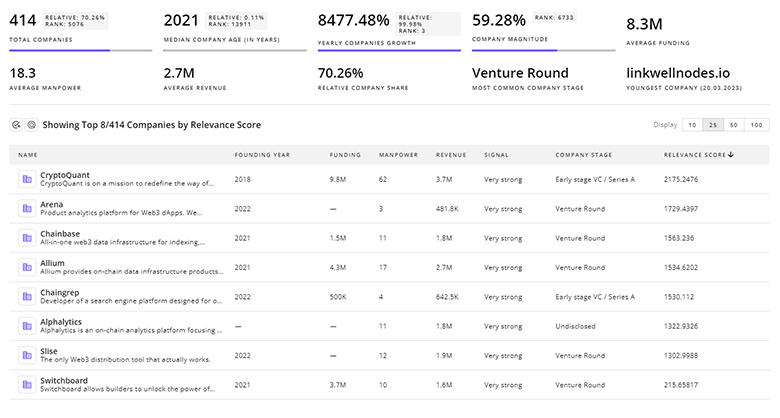
804 Neurotechnology Companies
Discover Neurotechnology Companies, their Funding, Manpower, Revenues, Stages, and much more
Neurotechnology Investors
TrendFeedr’s Investors tool offers comprehensive insights into 1.2K Neurotechnology investors by examining funding patterns and investment trends. This enables you to strategize effectively and identify opportunities in the Neurotechnology sector.

1.2K Neurotechnology Investors
Discover Neurotechnology Investors, Funding Rounds, Invested Amounts, and Funding Growth
Neurotechnology News
TrendFeedr’s News feature provides access to 1.6K Neurotechnology articles. This extensive database covers both historical and recent developments, enabling innovators and leaders to stay informed.
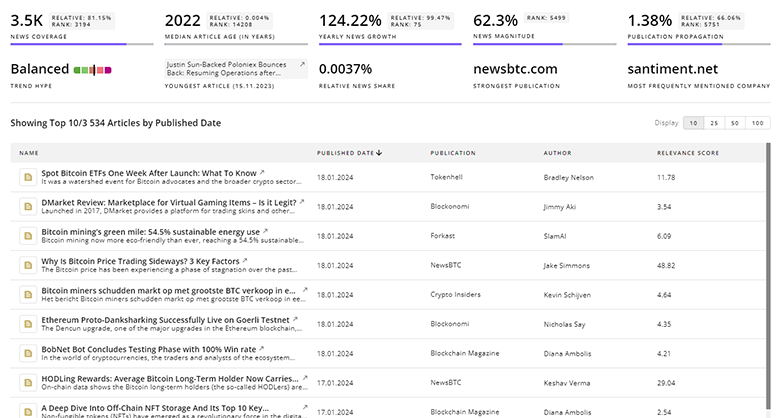
1.6K Neurotechnology News Articles
Discover Latest Neurotechnology Articles, News Magnitude, Publication Propagation, Yearly Growth, and Strongest Publications
Executive Summary
The business case for neurotechnology over the next five years rests on three linked premises: (1) demonstrable clinical differentiation through closed‑loop and AI‑driven therapies, (2) scalable monitoring and diagnostics that shift treatment earlier in disease courses, and (3) product designs that lower procedural friction (noninvasive or outpatient implants). Investors should prefer platforms that combine validated signals (diagnostics), adaptive control (closed‑loop therapy), and commercial routes to payers via demonstrated cost offsets (reduced long‑term care). Established device firms and well‑capitalized BCIs will consolidate clinical markets, while specialized startups that prove durable clinical endpoints—especially in rehabilitation, seizure control, and spinal repair—will be prime acquisition targets. Operational priorities for entrants are: narrow clinical indication with clear regulatory pathway, strong signal‑processing IP, and partnerships that embed devices into care workflows and payer reimbursement.
We value collaboration with industry professionals to offer even better insights. Interested in contributing? Get in touch!




